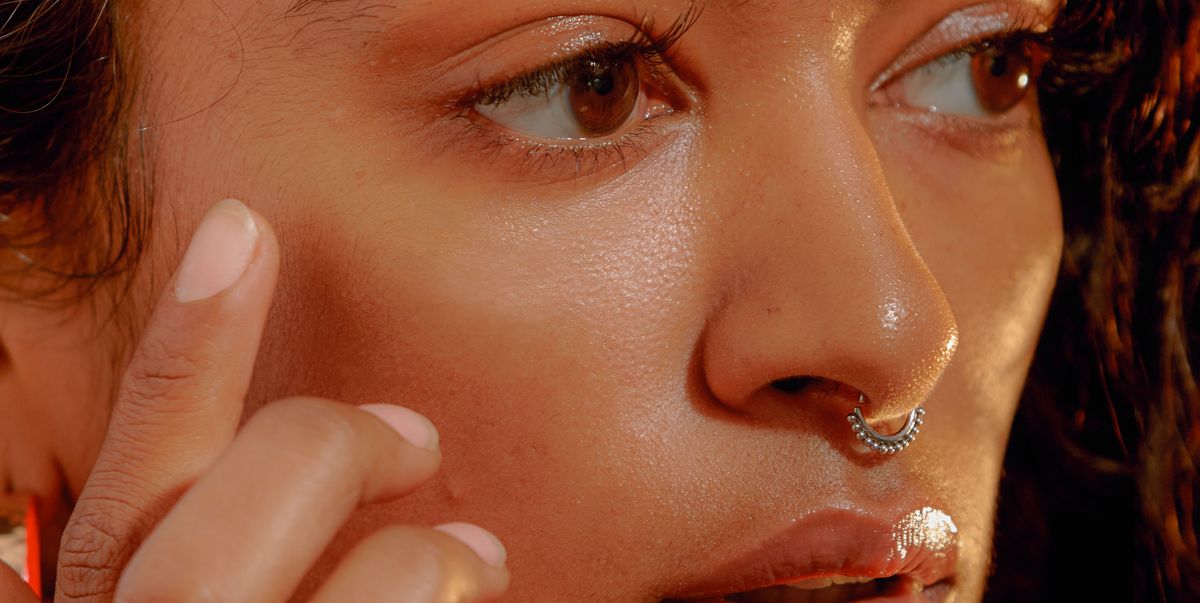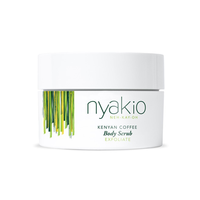
Caroline Tompkins / Refinery29 for Getty Images
Exfoliation is arguably one of the most complicated steps in my skin-care routine. I know I have to do it — lest I miss out on the bright, radiant complexion my collection of scrubs, acids, and tools promise me — but how often, when, and which methods I should be using remains elusive. I’m always somewhere between doing it too often and not enough — and I’m not alone. “How to exfoliate your face” continues to be a popular Google search, and the endless SkincareAddiction Reddit threads dedicated to exfoliation routines (and what to do when you’ve taken it too far) tell a tale of glow-seeking enthusiasts who are just trying to get it right.
So, What Is Exfoliation?
No matter what method you use, the goal of exfoliating is to remove dead skin cells from the top layer of your skin with the hope of revealing a brighter, more radiant complexion underneath. “Exfoliation can have significant benefits for your skin when done safely and correctly,” says board-certified dermatologist Tiffany Jow Libby, MD. In addition to brightening skin, exfoliation can help improve texture, assist in product absorption (which enhances their efficacy) and unclog pores. Shani Darden, an esthetician whose client roster includes glowy-skinned celebs like Kelly Rowland and Shay Mitchell agrees, recommending that every skin type stands to benefit from working this step into their routine.
And How Often Should You Do It?
There’s no set frequency for exfoliation. It truly depends on your skin type, the type of exfoliation, and the other products in your routine. If you’re just getting started, Dr. Libby advises exfoliating one to two times a week — working up to three times if your skin can handle it — and adding in one product at a time. It’s essential to listen to your skin and not overdo it, which can lead to redness and irritation. That means using one active at a time and alternating the days you use exfoliants and other active products like retinol. You should also be checking your products, to ensure you aren’t doubling up on your exfoliation with realizing.
The Different Methods Of Exfoliation
There are two methods of exfoliation, mechanical and chemical. Mechanical exfoliation (sometimes called physical exfoliation) is the process of using a physical agent, and likely what pops into your mind. This includes scrubs, sponges, brushes, and services like dermaplaning. Chemical exfoliation uses acids like alpha- and beta-hydroxy acids and has grown in popularity in the past few years. Both Dr. Libby and Darden suggest sticking to chemical exfoliants as they’re often just as effective and less harsh than a scrub can be. “Start by using a cleanser once a week that contains chemical exfoliant ingredients like salicylic acid, glycolic acid, and lactic acid,” says Dr. Libby, increasing the frequency if your skin tolerates it well. If you have rosacea-prone, sensitive skin, Dr. Libby recommends using lactic acid, which tends to gentler and more hydrating. For acne-prone skin types, she likes salicylic acid because it’s lipophilic (meaning it’s attracted to oil), and excellent at getting deep into pores.
If you can’t tolerate either method of exfoliation, Darden suggests removing your cleanser with cotton gauze. “The gauze will gently exfoliate the skin in the process, resulting in brighter skin. This is great for someone with really sensitive skin,” she shared.
Here is a helpful guide to finding the best exfoliating products for your skin type.
How To Tell If You’ve Over-exfoliated, And What To Do About It
One way to tell if you’ve exfoliated too much is your skin feels “squeaky clean.” That’s a sign you may have over-cleansed or over-exfoliated, Dr. Libby warns. Skin that’s been over-exfoliated will be dry, itchy, and generally irritated. If this happens, you should stop using any actives immediately and focus on hydrating the skin. Switch to a gentle cleanser and add a hyaluronic acid serum into your routine both morning and night. This will help your skin to attract moisture, and help repair the skin’s natural moisture barrier. Ultimately, what your skin needs is time, so give yourself a lengthy break and add actives back in slowly.
Body Time!
The skin on your body is thicker than the skin on your face and thus may tolerate physical exfoliation better. Darden swears by the Nyakio Kenyan Coffee Body Scrub as a weekly treatment, which she loves for the scent and the luxurious feeling it leaves behind. Dr. Libby, however, says sticking to chemical exfoliants for your body is best, and recommends using a wash formulated with acids.
Body Parts That Don’t Need Exfoliating
It might seem intuitive to exfoliate every inch of your body, but certain spots require extra caution. Dr. Libby warns against exfoliating the lips at all, pointing to the lack of oil glands and delicate, thin skin. This makes the lips more susceptible to water loss and damage she says, and recommends hydrating instead. Darden cautions exfoliating your neck and chest too often and being careful when you do. “They can be more sensitive areas,” she shared, “so you may not be able to exfoliate them as often as your face.”

